Sloped gardens present unique opportunities to create stunning outdoor spaces that work with natural topography rather than against it. These challenging landscapes can be transformed into spectacular multi-level environments through thoughtful design approaches. From cascading terraces that maximize planting space to dramatic rock gardens that embrace the natural incline, sloped areas offer endless possibilities for creative landscaping. Modern solutions include innovative drainage systems, carefully selected erosion-control plants, and strategic hardscaping elements that enhance both functionality and aesthetic appeal. Whether working with gentle inclines or steep hillsides, the key lies in understanding how to harness the slope's natural advantages while addressing practical concerns like water management and accessibility.

1. Terraced Stone Retaining Wall Garden

A terraced stone retaining wall garden transforms steep slopes into elegant stepped levels using natural stone construction. This classic approach creates multiple flat planting areas by building sturdy limestone or sandstone walls that rise two to three feet high. Each terrace becomes its own distinct garden room, allowing for diverse plantings from herbs and vegetables on upper levels to ornamental shrubs and perennials below. The natural stone materials blend seamlessly with surrounding landscape while providing excellent drainage through proper backfilling. Curved or angular wall designs can follow the natural contours of your slope, creating visual interest and practical growing space that's easily accessible for maintenance.
2. Cascading Water Feature Slope

A cascading water feature slope incorporates natural waterfalls and streams that flow downhill between planted areas. This dynamic design uses the slope's natural grade to create multiple water levels connected by stone channels or buried piping systems. Strategic boulder placement creates natural pools and spillways while ornamental grasses and moisture-loving plants frame the water's path. Solar-powered pumps can recirculate water from bottom reservoirs to top sources, creating continuous flow without waste. The sound of moving water masks neighborhood noise while attracting birds and wildlife. LED lighting systems highlight the water features after dark, extending garden enjoyment into evening hours.
3. Mediterranean Rock Garden Slope

A Mediterranean rock garden slope embraces drought-tolerant design using decomposed granite pathways and carefully placed boulders. This style incorporates lavender, rosemary, sage, and ornamental grasses between naturally weathered rocks of varying sizes. The warm, well-draining conditions created by the slope perfectly suit Mediterranean plants that thrive in sandy, rocky soil conditions. Olive trees or ornamental citrus provide vertical structure while groundcover herbs spread between stone elements. Terra cotta containers can be nestled among rocks for seasonal color displays. This low-maintenance approach requires minimal irrigation once established and provides year-round visual interest through varied textures and silver-green foliage tones.
4. Woodland Shade Garden Slope

A woodland shade garden slope utilizes existing trees and natural shade patterns to create a forest-floor ecosystem. This design incorporates native ferns, hostas, wild ginger, and shade-loving groundcovers that naturally occur in sloped woodland environments. Fallen logs serve as natural retaining elements while providing habitat for beneficial insects and moisture retention. Curved pathways of mulch or stepping stones wind through the planted areas, following natural deer trails or water flow patterns. Spring ephemeral wildflowers like trillium and bloodroot provide early seasonal interest before tree canopies fully develop. This sustainable approach works with existing microclimates while preventing erosion through dense root systems.
5. Modern Concrete Terrace Garden

A modern concrete terrace garden features sleek poured concrete retaining walls with integrated planters and seating areas. This contemporary approach creates clean, geometric lines that complement modern architecture while maximizing functional space on slopes. Polished concrete surfaces can incorporate integral color or exposed aggregate for textural interest. Built-in concrete planters eliminate the need for separate containers while providing proper drainage through weep holes. Linear plantings of ornamental grasses, architectural shrubs, and perennial borders soften the hard edges. LED strip lighting can be embedded in wall faces or planter edges for dramatic nighttime illumination. This style works particularly well with mid-century modern or contemporary home designs.
6. Prairie Grass Slope Stabilization
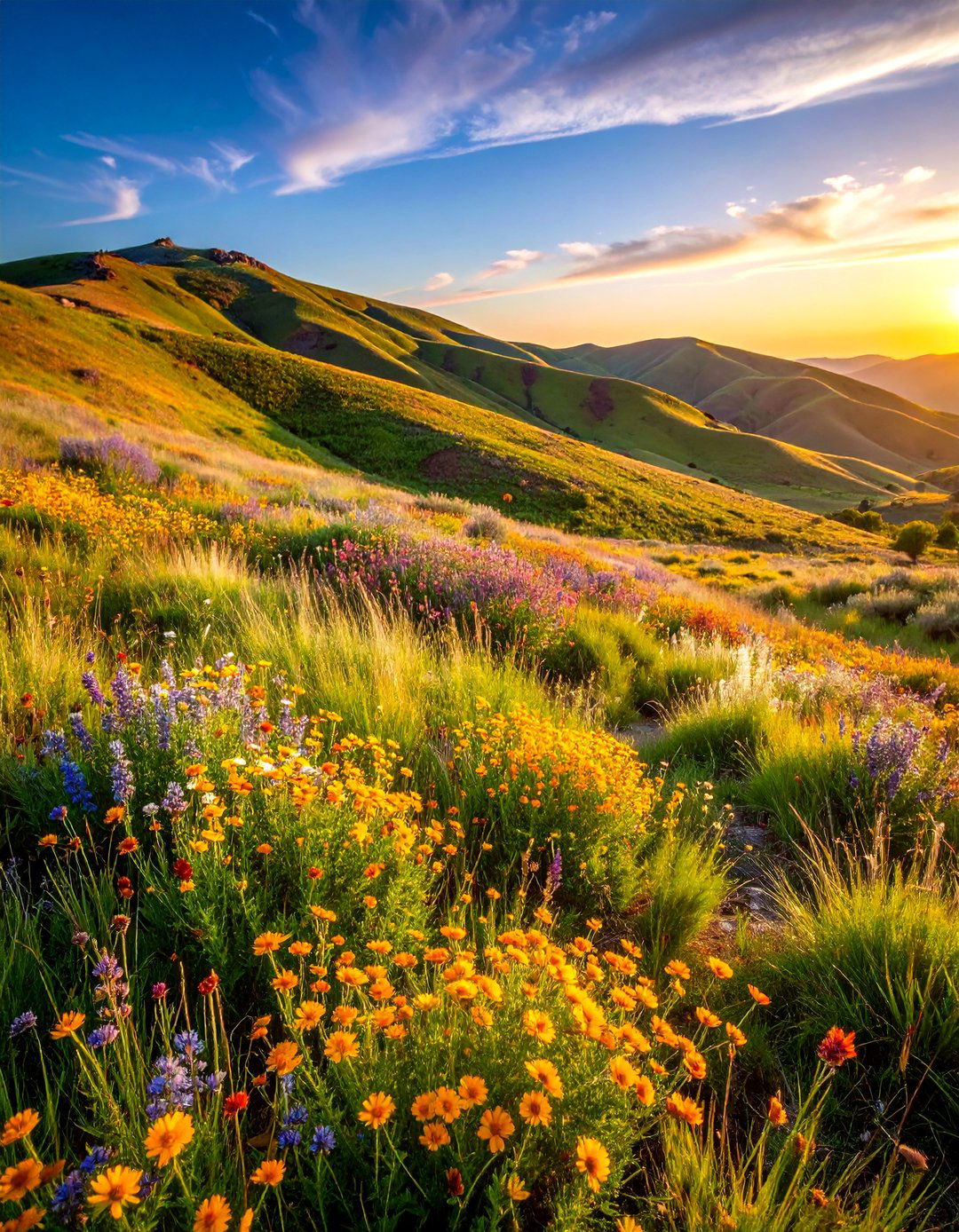
A prairie grass slope stabilization design uses native grasses and wildflowers to create natural erosion control while providing seasonal beauty. Deep-rooted species like little bluestem, switchgrass, and buffalo grass anchor soil naturally while supporting local wildlife ecosystems. Wildflower species such as black-eyed Susan, purple coneflower, and native asters add color throughout growing seasons. This approach requires minimal maintenance once established and adapts well to local climate conditions. Natural stone or timber barriers can create gentle terracing without formal retaining walls. The constantly changing textures and colors of prairie plants provide year-round visual interest while supporting pollinators and songbirds. This sustainable approach reduces mowing and irrigation needs significantly.
7. Japanese-Inspired Zen Slope
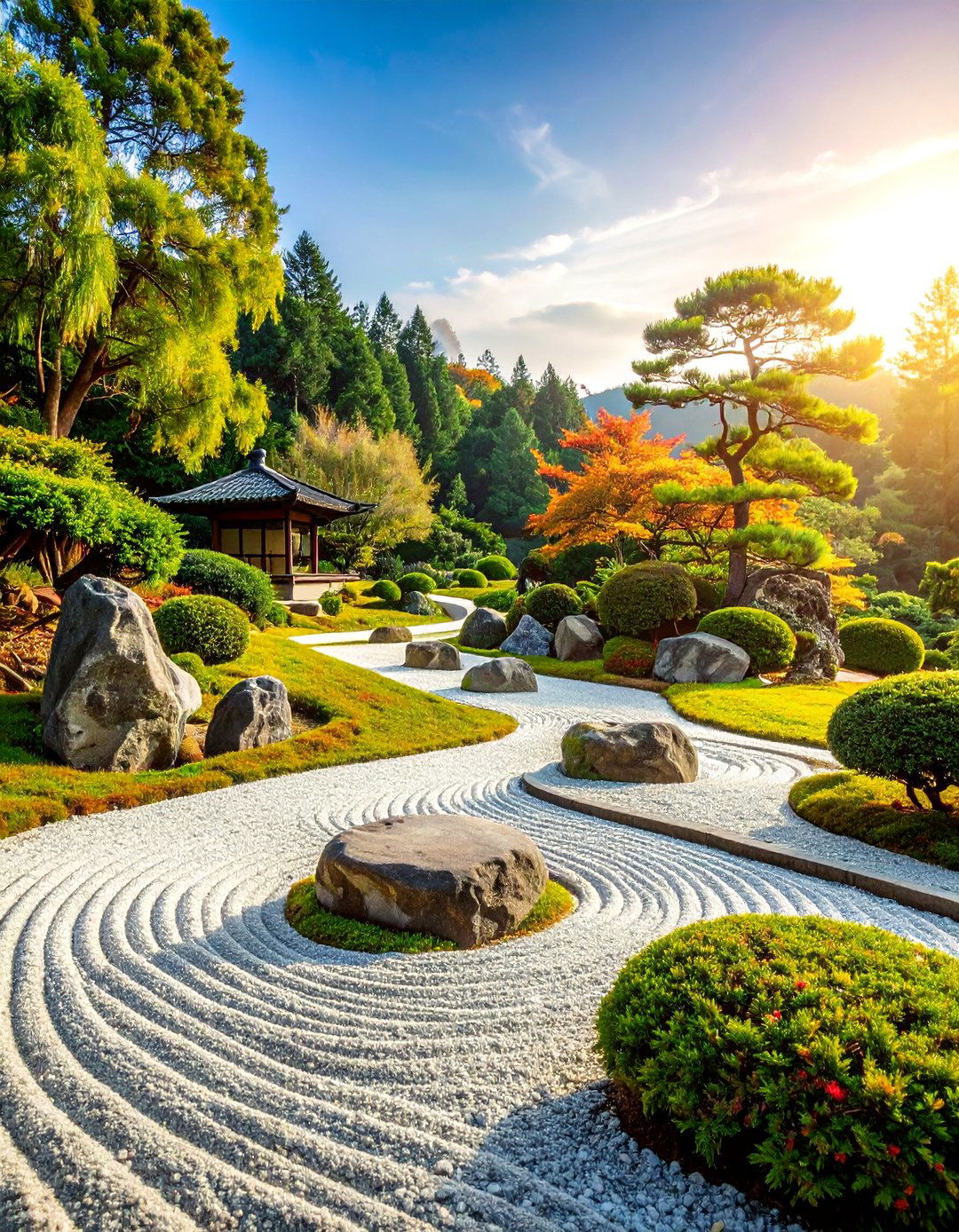
A Japanese-inspired zen slope incorporates carefully raked gravel, strategically placed boulders, and minimal plantings for contemplative garden space. This design philosophy emphasizes balance, asymmetry, and natural materials to create peaceful environments. Large stones represent mountains while flowing gravel patterns suggest water movement down the slope. Carefully pruned evergreen shrubs like mugo pine or juniper provide year-round structure without overwhelming the space. Simple wooden bridges or stepping stones create pathways for meditation walks. Bamboo water features add gentle sound elements. This style requires careful plant selection and maintenance but creates uniquely serene outdoor spaces that encourage quiet reflection and stress reduction.
8. Cottage Garden Hillside Plantings
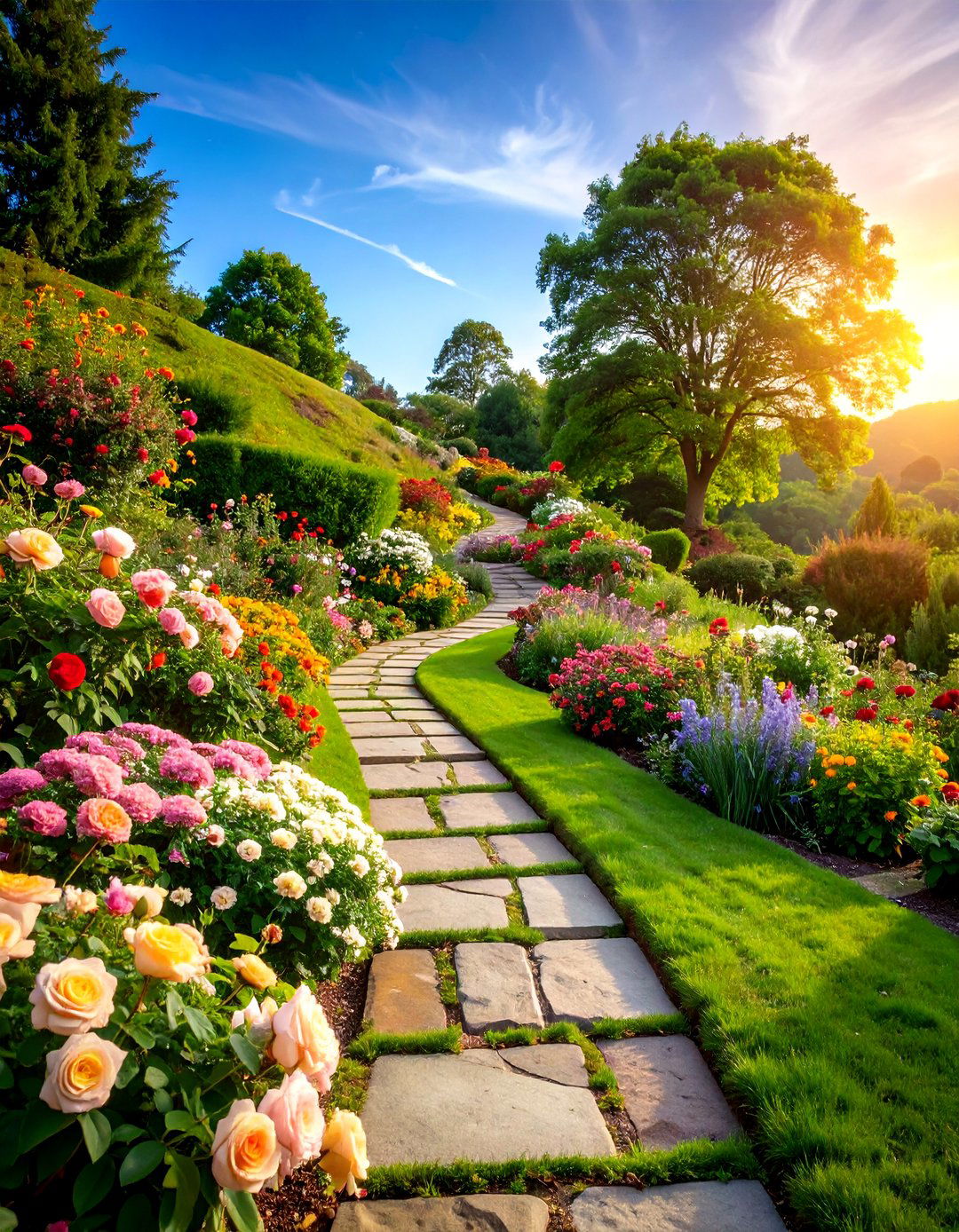
A cottage garden hillside planting embraces informal, abundant plantings that cascade naturally down slopes in romantic profusion. This English-inspired style combines perennials, herbs, and climbing plants in seemingly random but carefully planned arrangements. Roses, hollyhocks, delphiniums, and foxgloves provide vertical elements while catmint, lamb's ear, and hardy geraniums spill over edges. Curved gravel or flagstone paths wind through planted areas, creating intimate spaces for garden exploration. Rustic wooden benches positioned at key viewpoints encourage lingering in the garden. This style works particularly well with traditional architecture and provides continuous blooms throughout growing seasons with proper plant selection and succession planting techniques.
9. Succulent and Cactus Slope Garden
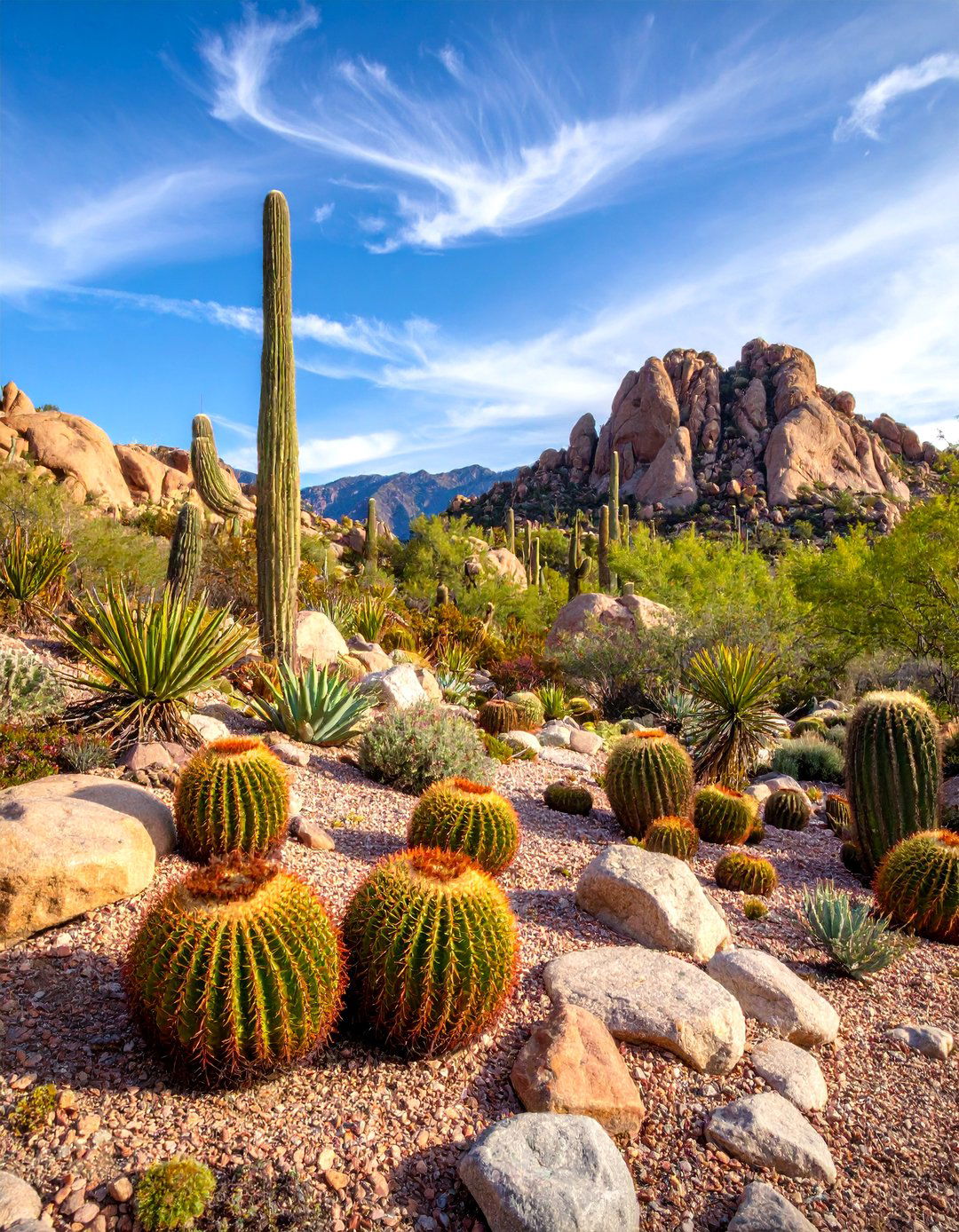
A succulent and cactus slope garden creates drought-tolerant landscapes using architectural plants that thrive in well-draining hillside conditions. This water-wise approach incorporates agaves, sedums, barrel cacti, and prickly pear varieties for diverse textures and forms. Decomposed granite or crushed rock mulch enhances drainage while providing attractive groundcover between plants. Large boulders create natural planting pockets and add visual weight to balance plant compositions. This style works exceptionally well in arid climates or for homeowners seeking low-maintenance landscapes. Seasonal blooms from various succulent species provide unexpected color while maintaining the garden's sculptural quality. Proper plant spacing allows room for growth while preventing overcrowding that can lead to disease problems.
10. Ornamental Grass Terraced Hillside

An ornamental grass terraced hillside uses flowing, textural grasses to create movement and seasonal interest across multiple levels. This design incorporates fountain grass, feather reed grass, and ornamental sedges that provide four-season appeal through varying heights and colors. Low stone or timber retaining walls create gentle terracing while allowing grasses to spill naturally over edges. The constant motion of grass blades in breezes adds dynamic elements to static landscapes. Seasonal seed heads provide winter interest and food for birds. Strategic placement of specimen trees or large shrubs provides vertical punctuation among the flowing grass textures. This approach requires minimal maintenance while providing maximum visual impact throughout changing seasons.
11. Herb Spiral Slope Integration

An herb spiral slope integration adapts the traditional herb spiral concept to work with natural hillside grades. This functional design creates ascending levels of aromatic and culinary herbs using stone or timber construction that follows the slope's contours. Mediterranean herbs like thyme, oregano, and rosemary occupy upper, well-drained areas while moisture-loving herbs like chives and parsley grow in lower positions. This design maximizes growing space while creating microclimates for different plant needs. Pathways spiraling around the structure provide easy access for harvesting and maintenance. The vertical structure creates visual interest while serving practical kitchen garden purposes. This approach combines permaculture principles with attractive landscaping for sustainable food production.
12. Native Wildflower Meadow Slope

A native wildflower meadow slope recreates local ecosystem conditions while providing habitat for beneficial insects and wildlife. This naturalistic approach uses locally adapted species that have evolved to thrive in regional soil and climate conditions. Flowers like native lupines, Indian paintbrush, and regional asters create seasonal color displays while supporting pollinator populations. Deep-rooted native plants provide natural erosion control without requiring irrigation or fertilization once established. Mowed pathways through meadow areas create access while maintaining the wild appearance. This low-maintenance approach supports biodiversity while creating beautiful, ever-changing seasonal displays. Regular overseeding helps maintain plant diversity and prevent invasive species establishment in disturbed areas.
13. Fruit Tree Orchard Terraces

Fruit tree orchard terraces transform slopes into productive landscapes using dwarf or semi-dwarf fruit trees planted on level terraces. This agricultural approach maximizes growing space while providing excellent drainage for fruit production. Stone or timber retaining walls create flat planting areas where trees can establish proper root systems. Understory plantings of herbs, berries, or beneficial companion plants create guild systems that support tree health. Irrigation systems can be integrated into terrace construction for efficient water delivery. This design provides both aesthetic value and homegrown food production. Seasonal flowering creates beautiful spring displays while autumn harvest provides fresh fruit. Proper tree selection ensures extended harvest periods and varied fruit types throughout growing seasons.
14. Alpine Rock Garden Ecosystem
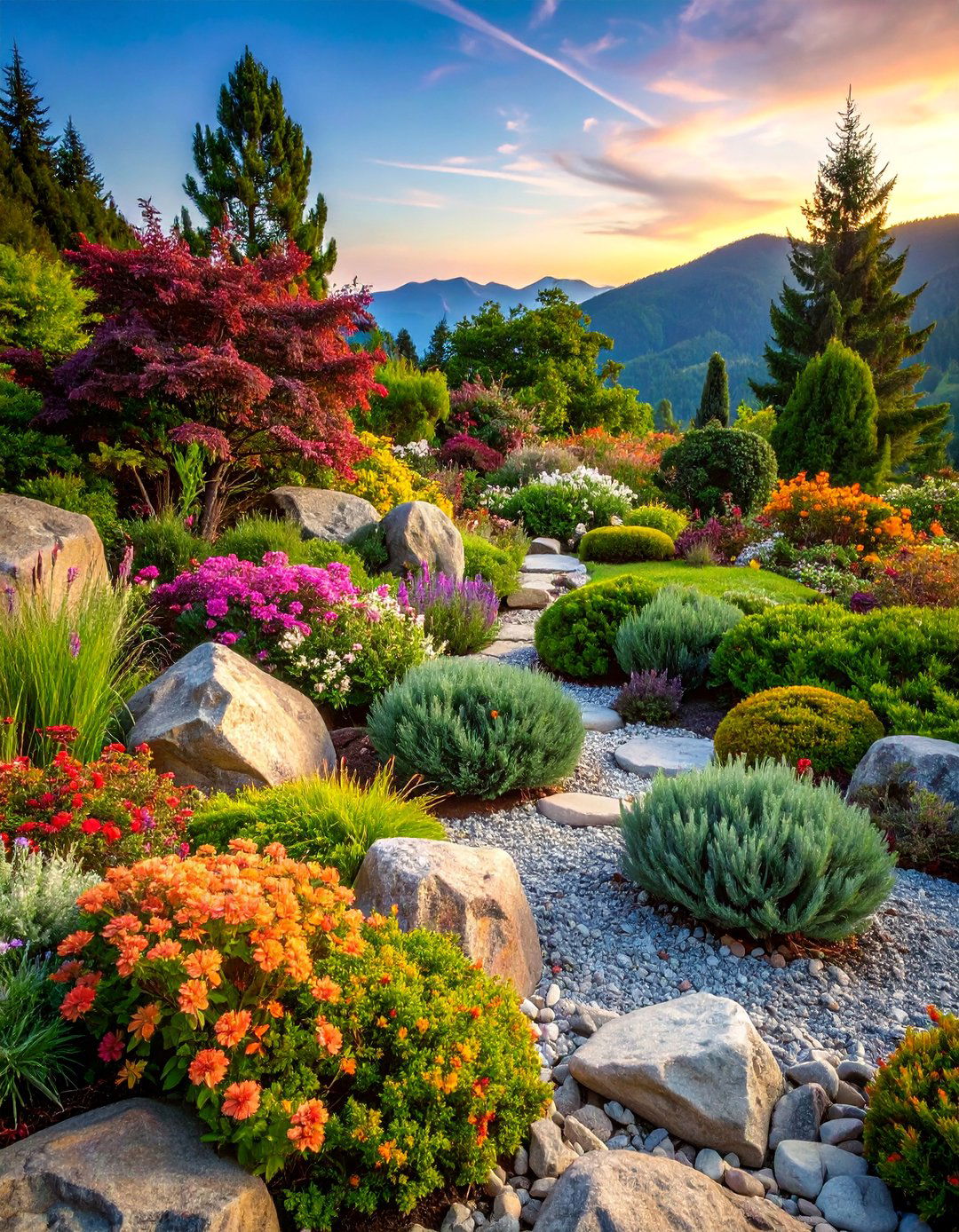
An alpine rock garden ecosystem recreates mountain growing conditions using sharp drainage, temperature fluctuations, and specialized plant selections. This challenging but rewarding approach incorporates cushion plants, dwarf conifers, and spring bulbs that thrive in rocky, well-drained conditions. Large boulders create natural windbreaks and thermal mass while providing planting pockets with different exposure aspects. Crushed rock mulch mimics natural scree conditions while providing excellent drainage. This style requires careful attention to plant selection and placement but creates unique garden environments that showcase specialized plant collections. Proper construction techniques ensure adequate drainage while preventing soil washout during heavy rains. Winter protection may be necessary in harsh climates.
15. Edible Forest Garden Slope

An edible forest garden slope creates multi-layered food production systems that mimic natural forest ecosystems. This permaculture approach combines fruit and nut trees as canopy layers with berry bushes, herbs, and groundcover edibles in understory positions. The slope's natural drainage supports diverse plant communities while reducing maintenance requirements. Strategic placement of nitrogen-fixing plants improves soil fertility naturally. Pathways wind through different forest layers, providing access for harvesting and maintenance activities. This sustainable approach provides year-round food production while creating wildlife habitat and reducing erosion. Proper plant selection ensures continuous harvests throughout growing seasons while building soil health through natural leaf litter and root systems.
16. Contemporary Steel and Stone Terracing

Contemporary steel and stone terracing combines industrial materials with natural stone for modern landscape architecture. This design approach uses weathering steel planters and retaining walls paired with locally quarried stone for textural contrast. Clean geometric lines create structured terraces while allowing for sophisticated plantings of architectural shrubs and ornamental grasses. Integrated lighting systems highlight material textures and plant forms after dark. This style complements modern architecture while providing functional growing space on challenging slopes. Proper drainage and structural engineering ensure longevity while maintaining aesthetic appeal. The combination of materials ages gracefully while requiring minimal maintenance. Plant selections emphasize form and texture over seasonal color for year-round visual impact.
17. Butterfly and Pollinator Slope Garden
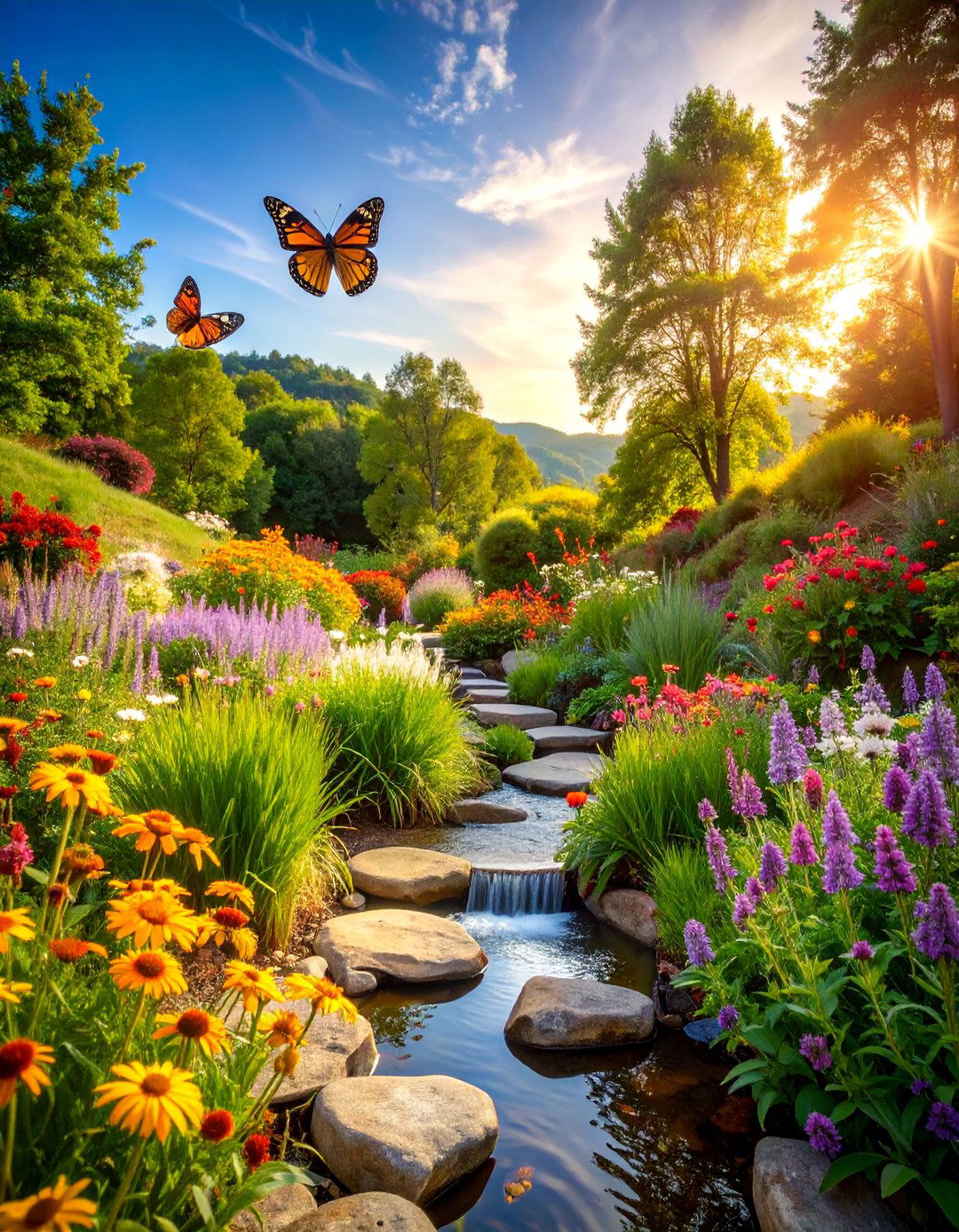
A butterfly and pollinator slope garden creates habitat corridors using nectar-rich plants arranged in seasonal succession for continuous blooms. This ecological approach incorporates native milkweeds, bee balm, asters, and other regionally appropriate flowering plants that support local pollinator populations. Gentle terracing or natural slope contours provide microclimates for different plant communities. Shallow water features or muddy areas provide drinking spots for butterflies and beneficial insects. This design requires careful plant selection and timing to ensure bloom succession throughout growing seasons. Host plants for butterfly larvae create complete lifecycle support systems. The constantly changing array of flowers and visiting insects provides dynamic garden interest while supporting important ecological functions.
18. Groundcover Carpet Slope Solution
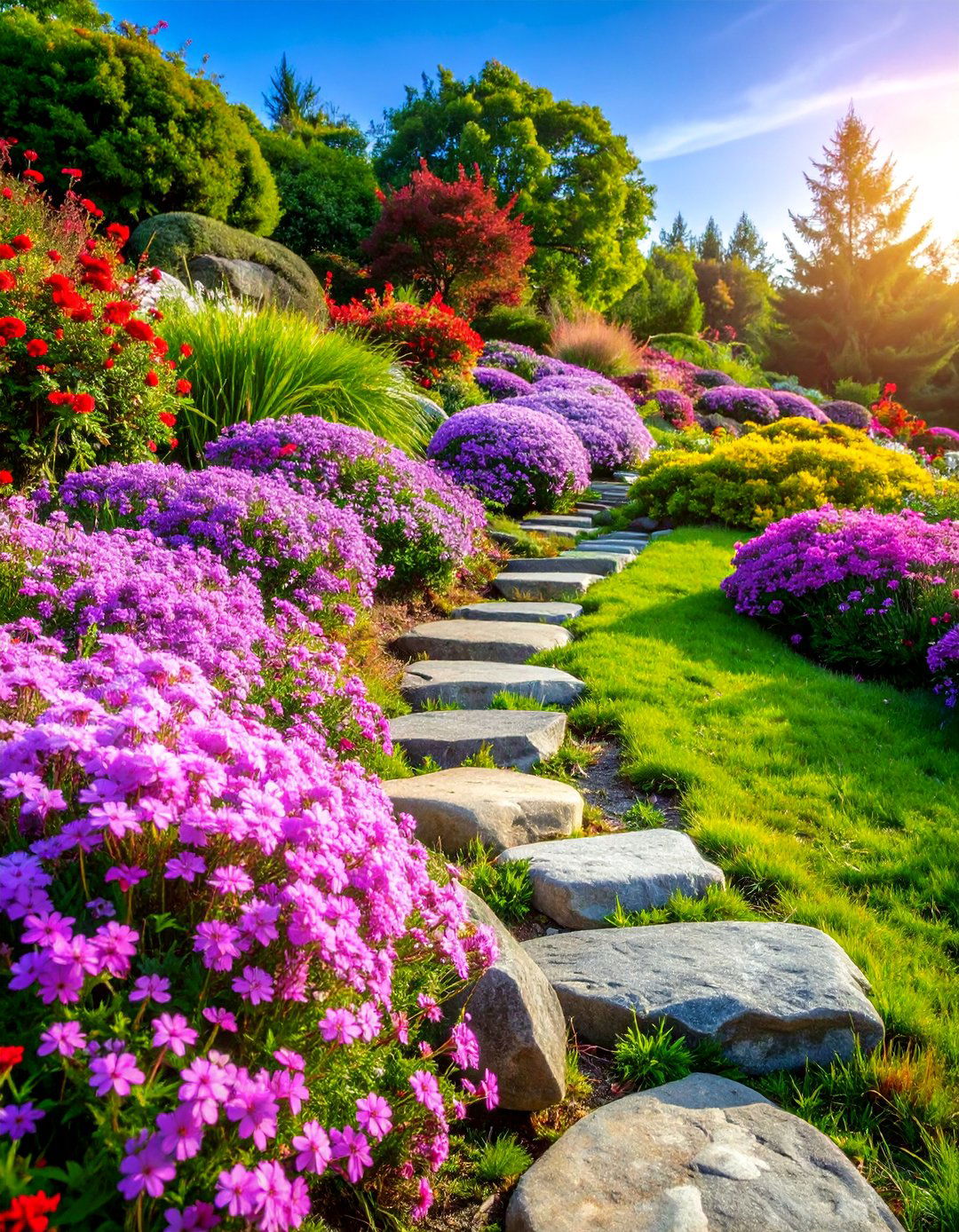
A groundcover carpet slope solution uses spreading plants to create dense, low-maintenance coverage that prevents erosion while providing visual appeal. This practical approach incorporates tough, spreading plants like creeping phlox, wild strawberry, or pachysandra that form thick mats over challenging terrain. Different groundcover species can create patterns or drifts that add visual interest to large slope areas. This approach eliminates difficult mowing while providing year-round coverage and seasonal interest through flowers or foliage changes. Strategic placement of stepping stones or pathways provides access for maintenance without disturbing established plant coverage. Once established, this solution requires minimal care while providing maximum erosion control and attractive landscape coverage.
19. Rain Garden Slope Integration
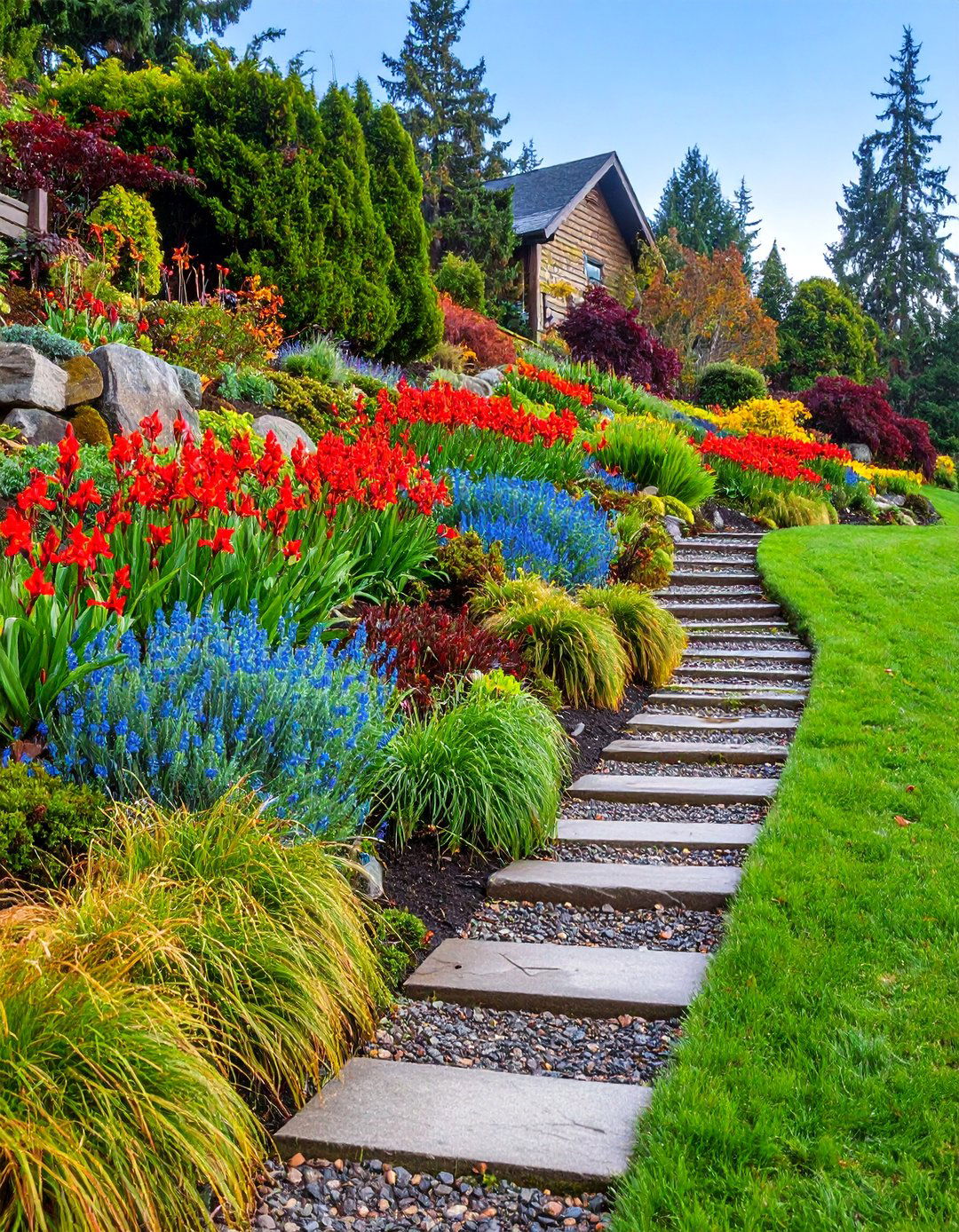
A rain garden slope integration captures and filters stormwater runoff while creating beautiful planted landscapes. This environmentally conscious approach uses the slope's natural drainage patterns to direct water into specially designed planting areas filled with moisture-tolerant native plants. Strategic placement of berms and swales slows water flow while allowing natural infiltration. Plants like cardinal flower, blue flag iris, and native sedges thrive in these conditions while filtering pollutants from runoff water. This design reduces erosion and flooding while creating habitat for amphibians and water-loving insects. Proper construction techniques ensure adequate drainage during heavy rains while maintaining attractive plantings during dry periods.
20. Vertical Garden Wall Systems

Vertical garden wall systems maximize planting space on steep slopes using modular growing systems attached to retaining structures. This innovative approach incorporates living walls with integrated irrigation and drainage systems that support diverse plant communities in vertical arrangements. Specialized growing media and plant selections ensure successful establishment while minimizing maintenance requirements. This technique works particularly well for herb gardens, succulent displays, or annual flower arrangements. Proper structural support and waterproofing protect underlying walls while supporting plant growth. This approach creates dramatic visual impact while maximizing growing space in limited areas. Seasonal plant changes allow for continuous color and interest throughout the year.
21. Timber Step and Planter Combination

A timber step and planter combination uses naturally rot-resistant wood to create accessible pathways with integrated growing spaces. This functional design incorporates cedar, redwood, or pressure-treated lumber in stepped configurations that follow slope contours while providing level planting areas. Built-in planters eliminate the need for separate containers while creating organized growing spaces for herbs, vegetables, or ornamental plants. Proper drainage and construction techniques ensure longevity while maintaining attractive appearance. This approach works well for kitchen gardens or cutting flower production where easy access is important. The warm appearance of natural wood complements most architectural styles while providing practical growing solutions for sloped sites.
22. Xeriscape Desert Slope Design
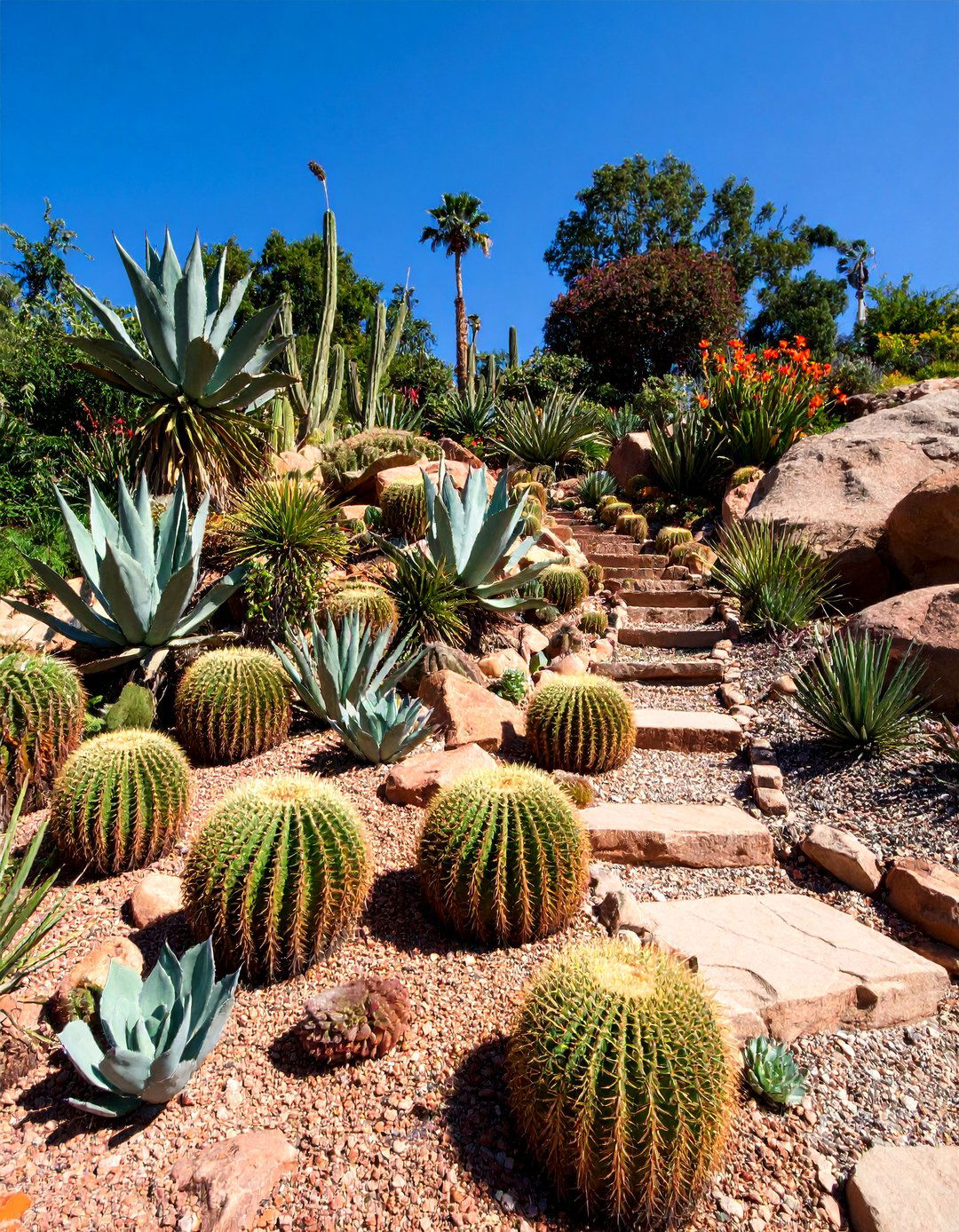
A xeriscape desert slope design embraces arid-climate principles using drought-tolerant plants and minimal irrigation for sustainable landscapes. This water-wise approach incorporates desert-adapted plants like palo verde, desert marigold, and various agave species that thrive in challenging slope conditions. Decomposed granite pathways and boulder placement create natural-looking arrangements that require minimal maintenance once established. Strategic use of colorful ceramic containers adds seasonal interest while maintaining the desert aesthetic. This approach works particularly well in southwestern climates or areas with water restrictions. Proper soil amendment and initial watering help plants establish, but mature plantings require little supplemental irrigation. The sculptural qualities of desert plants provide year-round visual interest.
23. Cottage Herb and Flower Terraces

Cottage herb and flower terraces combine practical herb cultivation with romantic flower gardens using rustic materials and informal plantings. This approach creates stepped growing areas using reclaimed wood, natural stone, or brick materials that develop attractive patina over time. Mixed plantings of culinary herbs, cutting flowers, and aromatic plants create abundant, informal displays that provide both beauty and utility. Curved pathways and casual plant arrangements soften formal terrace lines while maintaining accessibility for harvesting and maintenance. This style works particularly well near kitchen areas or outdoor entertaining spaces where herbs and flowers serve both decorative and practical purposes. Seasonal succession planting ensures continuous harvests and blooms throughout growing seasons.
24. Modern Minimalist Slope Landscaping

Modern minimalist slope landscaping emphasizes clean lines, limited plant palettes, and architectural elements for sophisticated contemporary appeal. This approach uses carefully selected plants in repetitive patterns or masses to create visual impact through simplicity rather than complexity. Structural elements like concrete planters, steel edging, or geometric stone arrangements provide framework for restrained plantings. This style works particularly well with contemporary architecture and requires careful maintenance to preserve crisp, clean appearances. Limited color palettes using foliage plants or single flower colors create cohesive designs that emphasize form and texture. Strategic lighting and irrigation systems support plant health while maintaining the minimalist aesthetic through concealed infrastructure.
25. Wildlife Habitat Slope Sanctuary
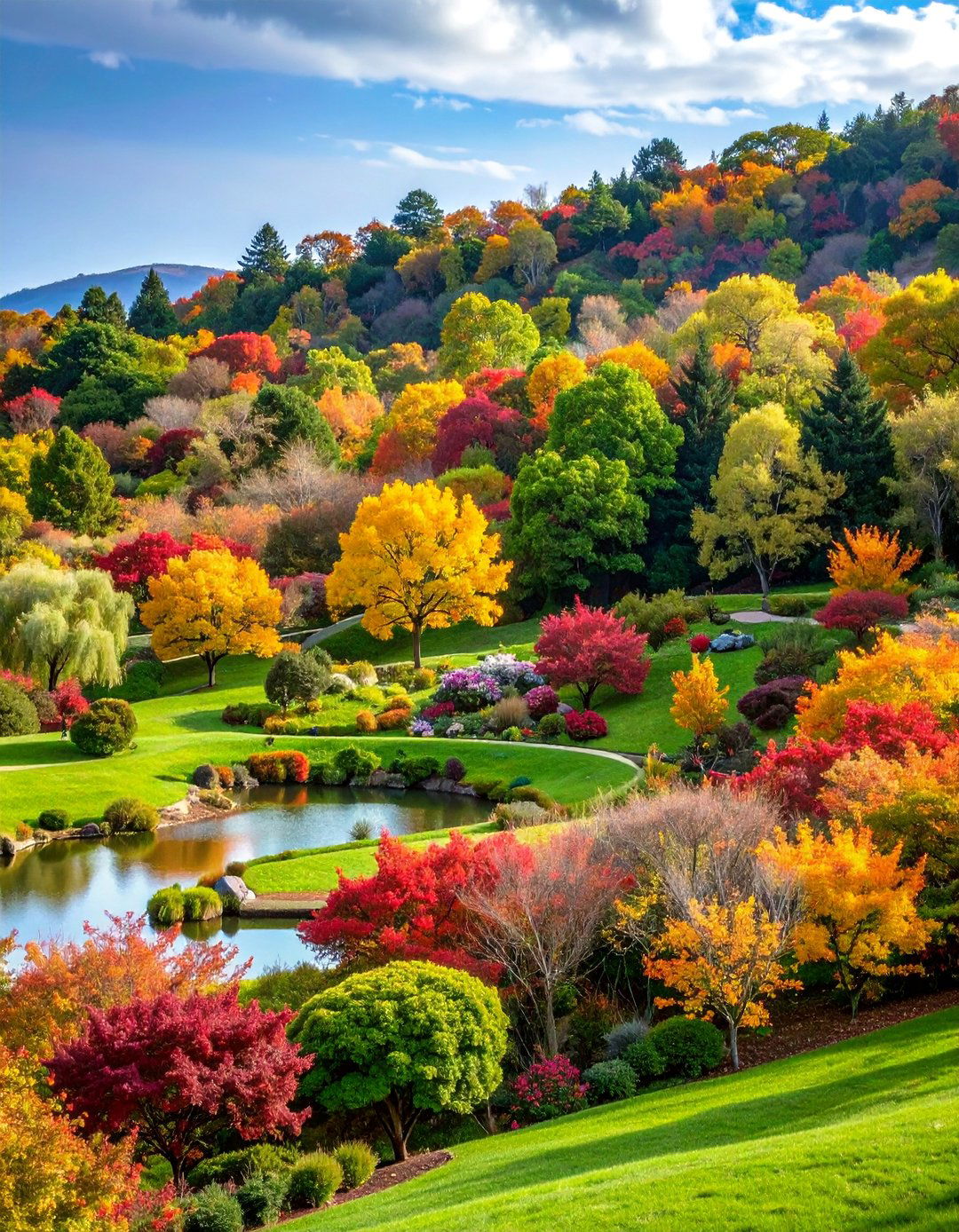
A wildlife habitat slope sanctuary creates natural ecosystems that support diverse animal communities while providing beautiful landscape settings. This ecological approach incorporates native trees, shrubs, and groundcovers that provide food, shelter, and nesting sites for birds, butterflies, and beneficial insects. Strategic placement of brush piles, log features, and native plant communities creates habitat diversity while maintaining attractive landscape appearance. Water features like small ponds or seasonal wetlands support amphibians and provide drinking sources for wildlife. This approach requires understanding of local wildlife needs and native plant communities but creates dynamic, ever-changing garden environments. Seasonal migrations and breeding activities provide ongoing interest while supporting important conservation goals.
Conclusion:
Transforming sloped gardens requires creativity, proper planning, and understanding of natural drainage patterns. These 25 design approaches demonstrate that challenging terrain can become spectacular landscape features through thoughtful plant selection, strategic hardscaping, and sustainable design principles. Whether incorporating water features, creating terraced growing spaces, or establishing wildlife habitats, successful slope gardens work with natural topography rather than against it. Each approach offers unique benefits from erosion control to food production while creating beautiful outdoor environments that enhance property value and provide lasting enjoyment.


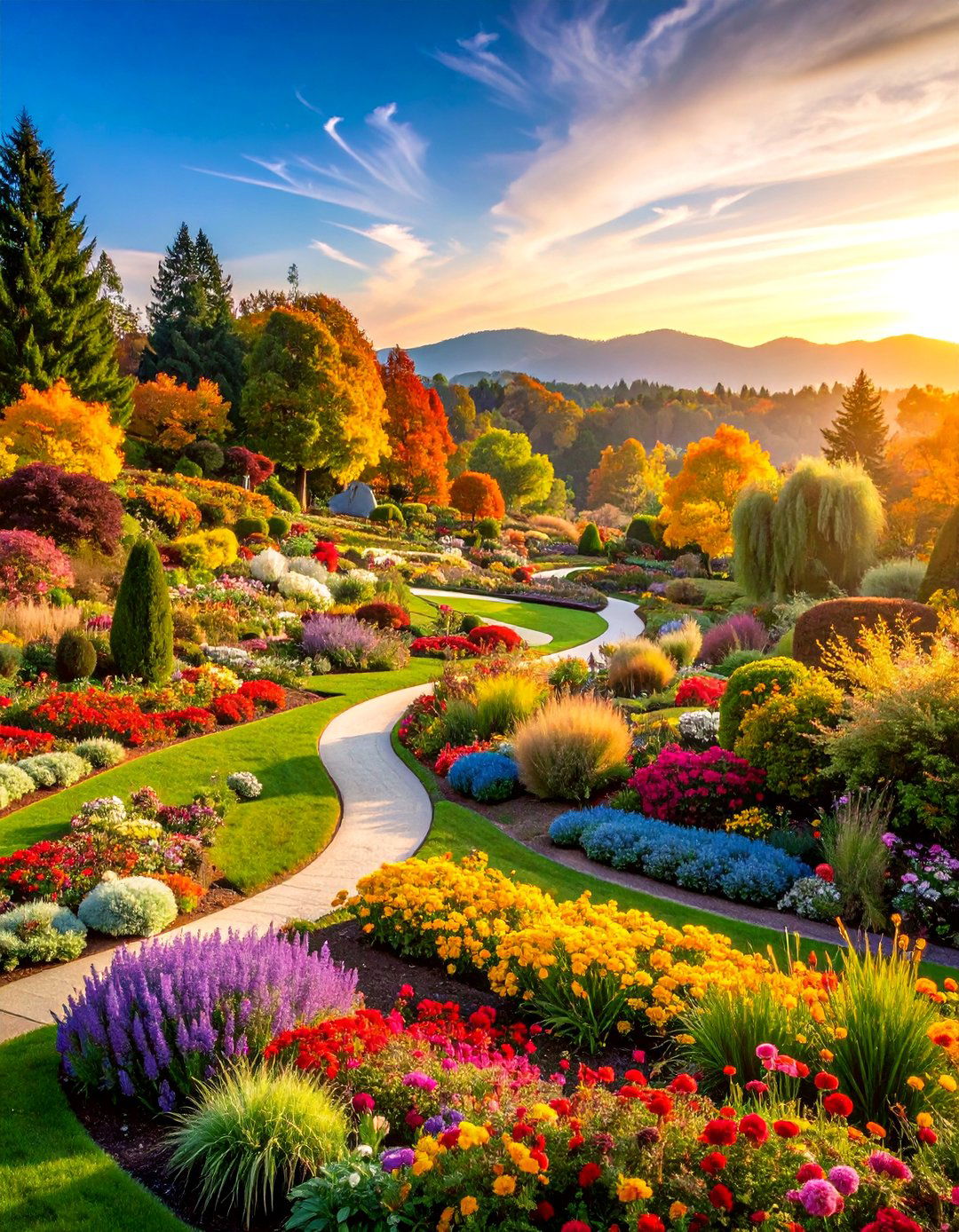

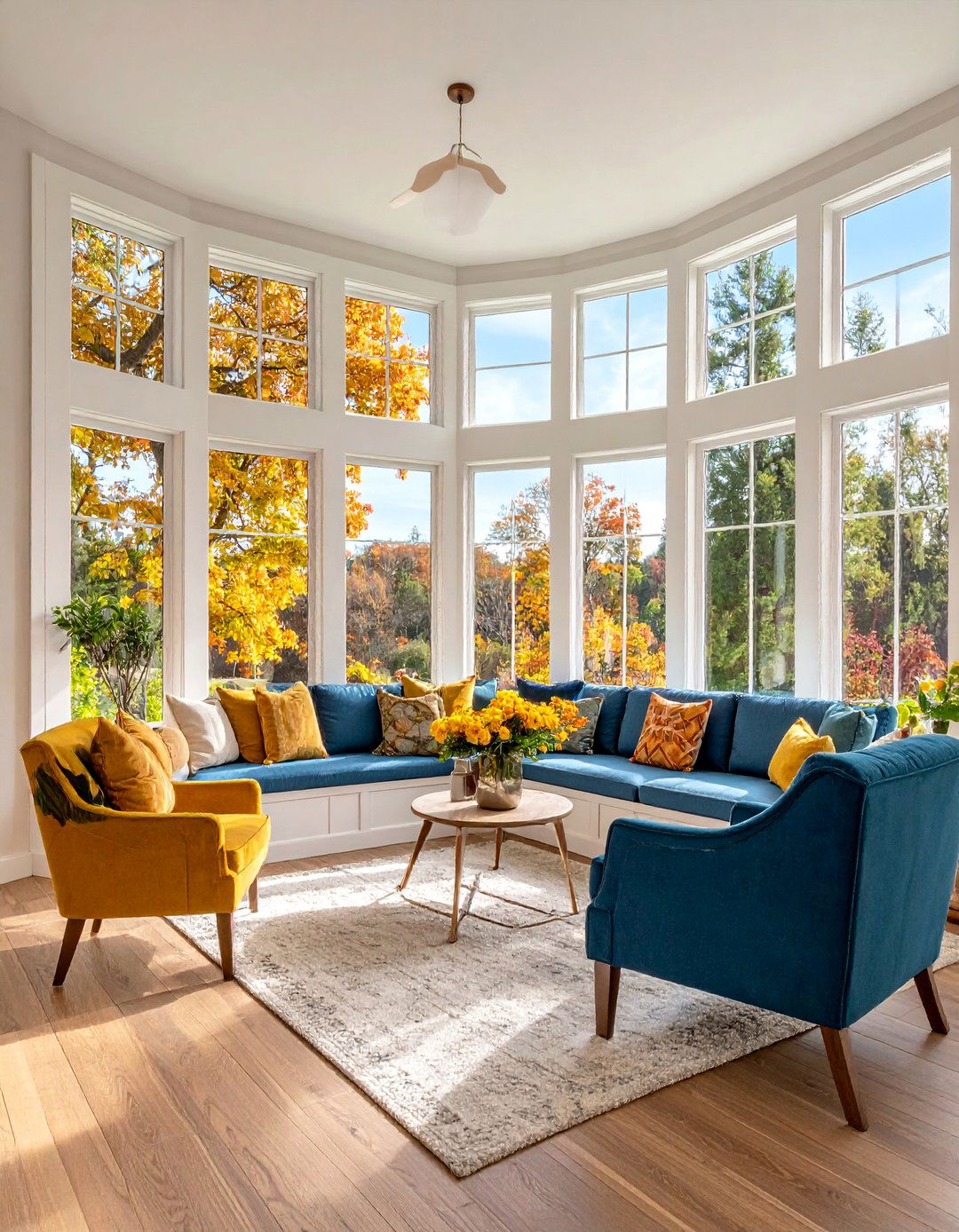

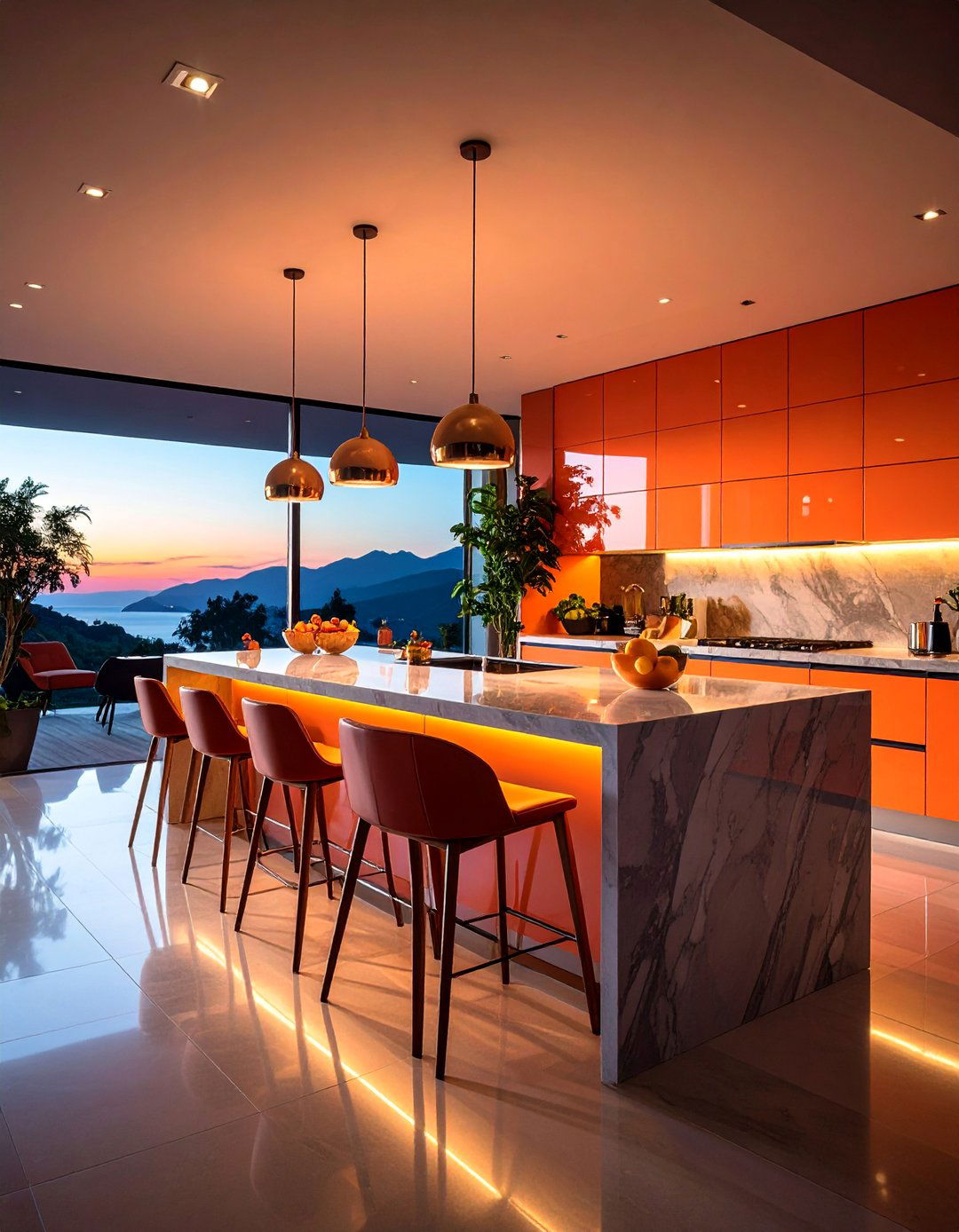
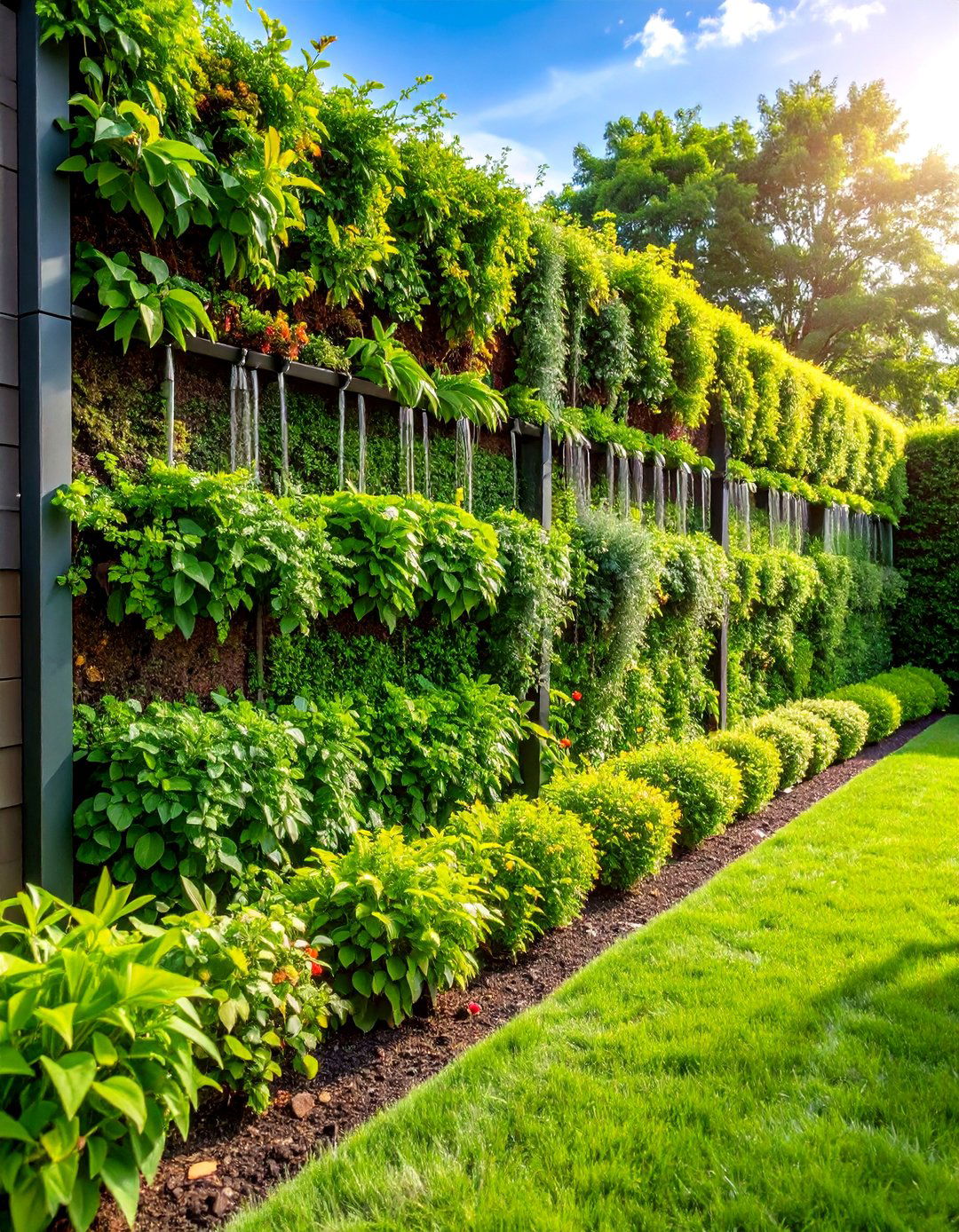

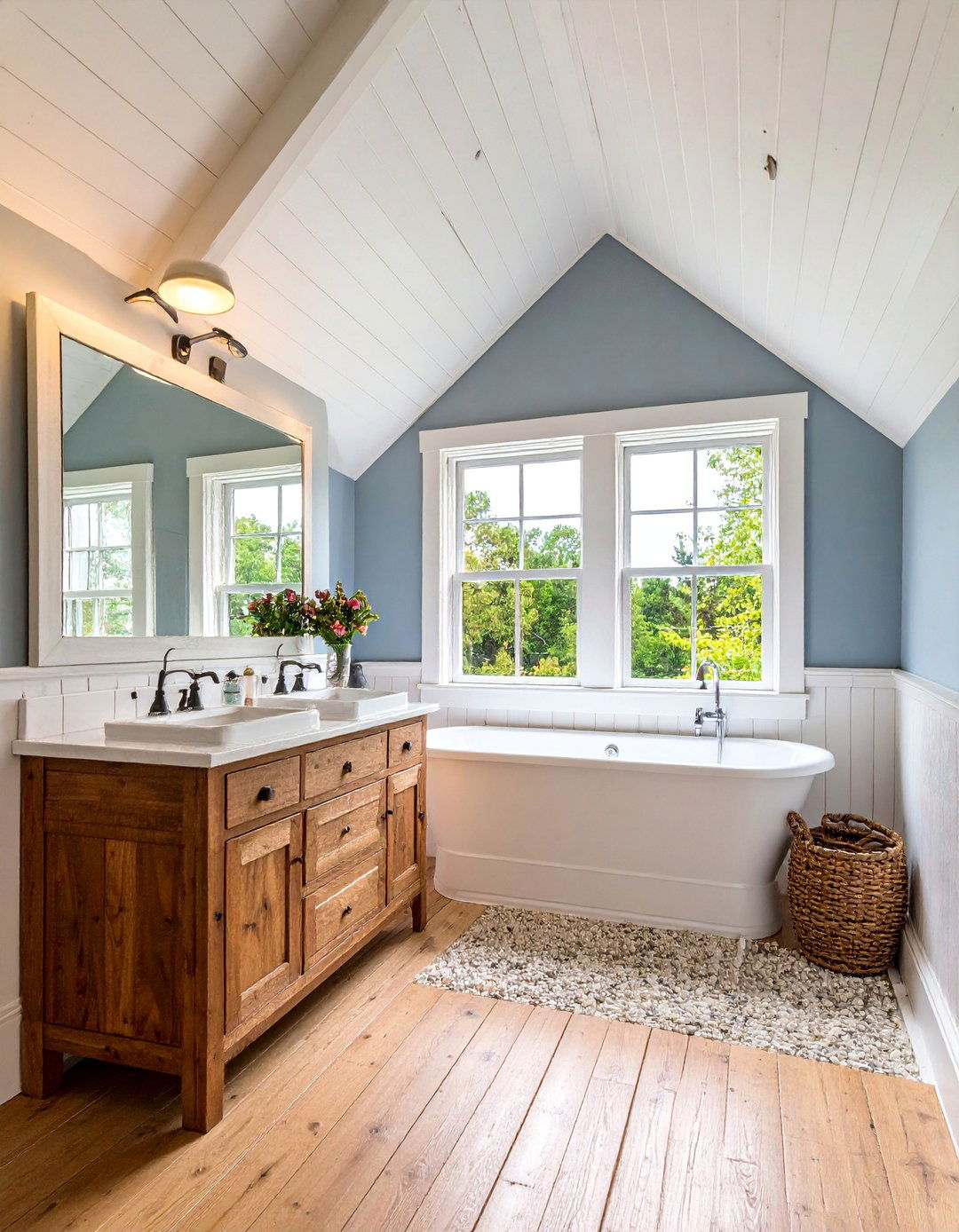


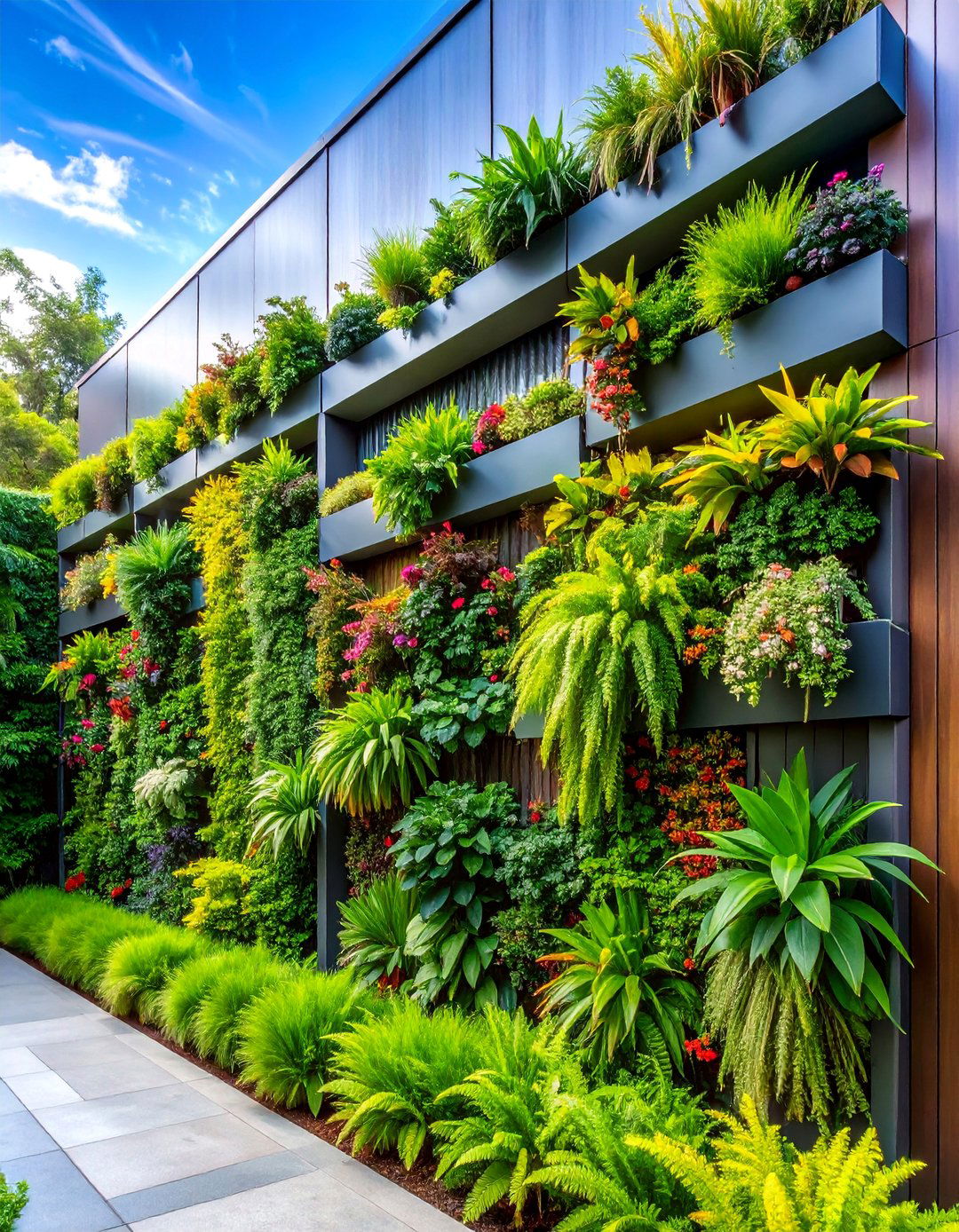

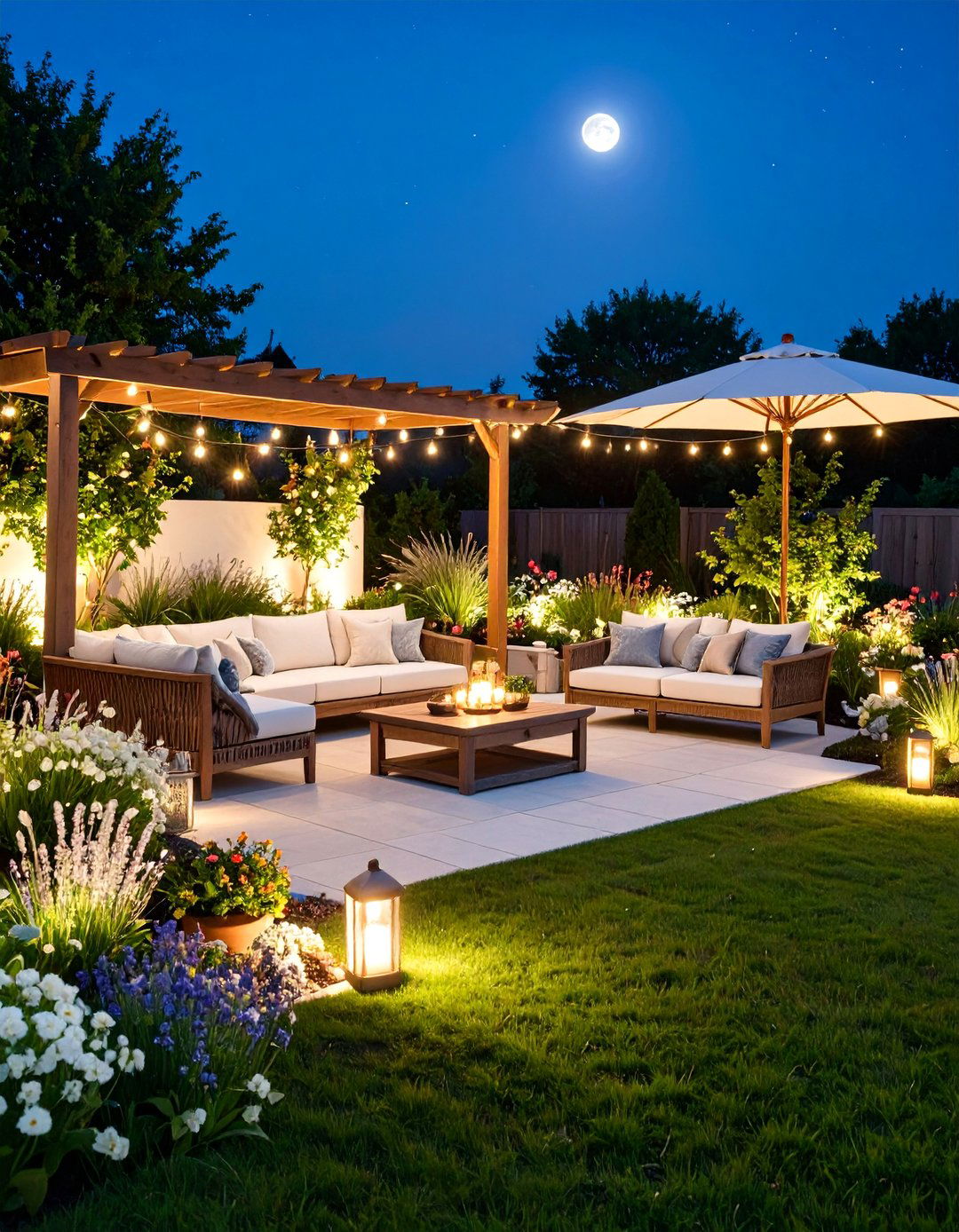

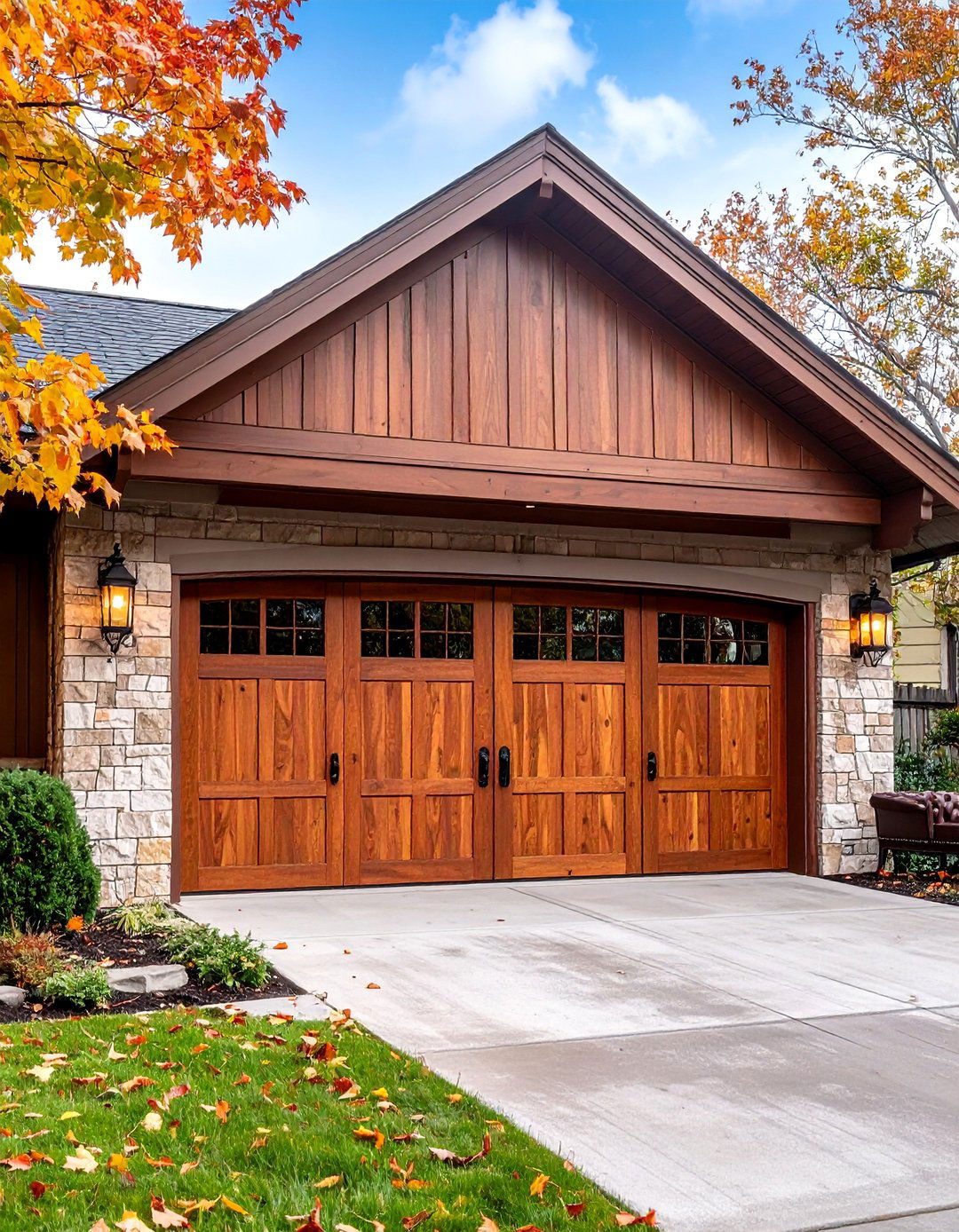
Leave a Reply